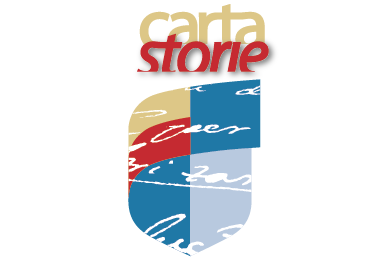Raimondo di Sangro, the Prince of Sansevero
The legends and the fantasies surrounding the figure of Raimondo di Sangro, Prince of Sansevero have been repeated so often over the centuries, that they have become an important part of the memory and the culture of the city of Naples.
He was a controversial figure, and a brilliant exponent of the enlightenment in Naples at a time when it had once again become an important capital city. Without a doubt, he was also one of the most interesting personalities in 18th century Europe. But which of these legends is actually based on facts? Is it true that he was an alchemist or even a witch doctor? The Historical Archives of the Banco di Napoli contains a labyrinth of volumes with some of the answers to the questions posed by scholars regarding Raimondo di Sangro.
Thanks to the detailed payment orders made by the nobleman, at least some of these popular myths can be dispelled.
For example, the magnificent marble veil over the body of the sculpture known as the Veiled Christ was not the result of some kind of dark sorcery – the work was carried out entirely by Giuseppe Sanmartino.
February 13, 1754. To Giuseppe Sanmartino, 500 ducats for the statue sculpted in marble of the body Our Lord Jesus Christ covered in a shroud in the form of a transparent veil made of the same marble, as the work was done to complete satisfaction.
Although some of the false myths surrounding the figure of Raimondo di Sangro have been dispelled, other information has emerged from documents in the Archives which shed light on other aspects of his brilliance and striking originality. Raimondo di Sangro was truly a genius in his time, animated by curiosity and an daring spirit which led him to create a complete laboratory, as well as a print shop, in the basement of his family palace.
To the master builder Pompeo Serio for all of the building work, materials and other services done in the laboratory and crystal and enamel foundry, built in the basement on the left of the entry hall of the house, May 9, 1754
In the basement of his palace, Raimondo experimented with chemicals, with the spread of European ideas, and with every other kind of experiment.
Eight ducats and 10 grana in the name of the Prince of San Severo Don Raimondo di Sangro. These are for the price agreed upon for alembic (still) sold to the above-mentioned Prince.
To Nicolò Kommarek for thirty thousand round and cursive characters in Sesto
As an alchemist, inventor and high-ranking figure in the Neapolitan aristocracy, the Prince of Sansevero, though impossible to define completely, can be more accurately described thanks to the documents describing his daily, and more extraordinary acquisitions. These details have helped to consecrate his importance in the new season of enlightenment in the city of Naples.
